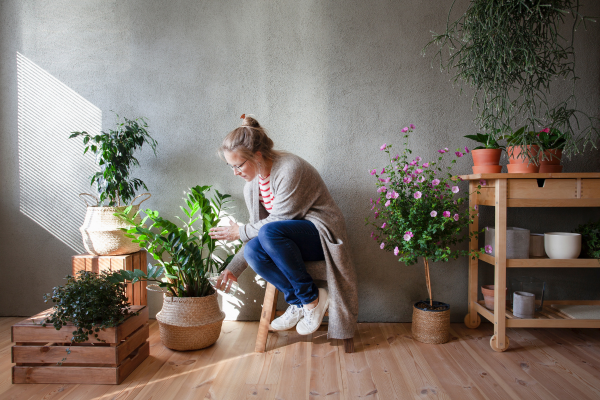Your cart is currently empty!

12 Jun Banishing Fungus Gnats: A Guide To Eliminating Them From Indoor Plants
Indoor plants bring life and beauty to our living spaces, but they can also attract unwanted guests—fungus gnats. Fungus gnats, also known as soil gnats or sciarid flies, are small, delicate insects that resemble tiny mosquitoes. They are commonly found in damp, organic-rich soil, where they lay their eggs. Fungus gnat larvae feed on decaying plant matter and fungi, while adult gnats primarily feed on organic matter and plant roots.
The presence of these tiny flying insects can be annoying and detrimental to the health of your beloved plants. In this article, we will explore effective strategies to help you get rid of fungus gnats and restore a thriving environment for your indoor greenery.
Signs of Fungus Gnat Infestation
1. Frequent sightings of tiny, dark flies buzzing around your plants, particularly when watering or disturbing the soil.
2. Yellowing or wilting leaves, as the larvae can damage plant roots and impede nutrient uptake.
3. Small, whitish larvae can be seen crawling on the soil surface or just beneath it.
Effective Strategies to Get Rid of Fungus Gnats
1. Allow the Soil to Dry Out: Fungus gnats thrive in moist environments, so allowing the top inch (or two) of soil to dry out between waterings can significantly disrupt their life cycle. Be careful not to overwater your plants, as soggy soil creates an ideal breeding ground for these pests.
2. Sticky Traps: Place yellow sticky traps near your plants to catch adult gnats in flight. The bright colour attracts them, and they become stuck on the adhesive surface. This method is effective in reducing the adult population, but it may not eliminate the larvae present in the soil.
3. Neem Oil: Neem oil is a natural and safe insecticide derived from the neem tree. Dilute neem oil according to the instructions and spray it on the soil surface, avoiding direct application to the plant leaves. Neem oil disrupts the gnats’ life cycle, killing the larvae and repelling adult gnats. Repeat the application every few days until the infestation is under control.
4. Hydrogen Peroxide Solution: Create a solution of one part hydrogen peroxide (3% concentration) to four parts water. Allow the top layer of soil to dry, then thoroughly drench the affected plants with the solution. Hydrogen peroxide helps to kill larvae and oxygenate the soil, preventing future infestations. However, be cautious when using this method on plants with sensitive roots.
5. Soil Drench With Beneficial Nematodes: Beneficial nematodes are microscopic roundworms that prey on fungus gnat larvae. These beneficial organisms are available for purchase and can be applied to the soil according to the instructions provided. They effectively control the larvae population, reducing the chances of recurring infestations.
Preventative Measures
1. Ensure Proper Drainage: Good drainage is crucial for preventing fungus gnat infestations. Use well-draining potting soil and ensure that your plant pots have drainage holes to avoid waterlogged conditions.
2. Avoid Overwatering: Maintain a regular watering schedule and avoid excessive moisture in the soil. Water your plants only when the top inch or two of soil feels dry to the touch.
3. Remove Decaying Organic Matter: Regularly inspect your plants for decaying leaves, fallen flowers, or any other organic matter on the soil surface. Remove such debris promptly to eliminate potential food sources for fungus gnats.
4. Quarantine New Plants: Before introducing new plants to your indoor collection, you should quarantine them. By quarantining your new plants for at least 40 days, you minimize the risk of spreading fungus gnats to them.
In the battle against pesky fungus gnats invading your indoor plants, it’s essential to arm yourself with the right tools. That’s why we urge you to take action and consider incorporating NemaKnights Fungus Gnat & Thrips Control into your pest management routine. NemaKnights Biological Gnat Control allows for a convenient spot treatment solution that makes it easy to apply to multiple planters at one time. Simply flip open the cap, shake the pearls into the planters, and spray with water!
Don’t let fungus gnats compromise the beauty and health of your indoor plants. Take action now and choose NemaKnights Fungus Gnat & Thrips Control as your eco-friendly solution.
Visit our website, The Environmental Factor to learn more about NemaKnights and how they can help you reclaim your indoor plant oasis from the clutches of fungus gnats. Together, let’s create a thriving, pest-free environment for your beloved green companions while preserving our planet’s delicate balance.


